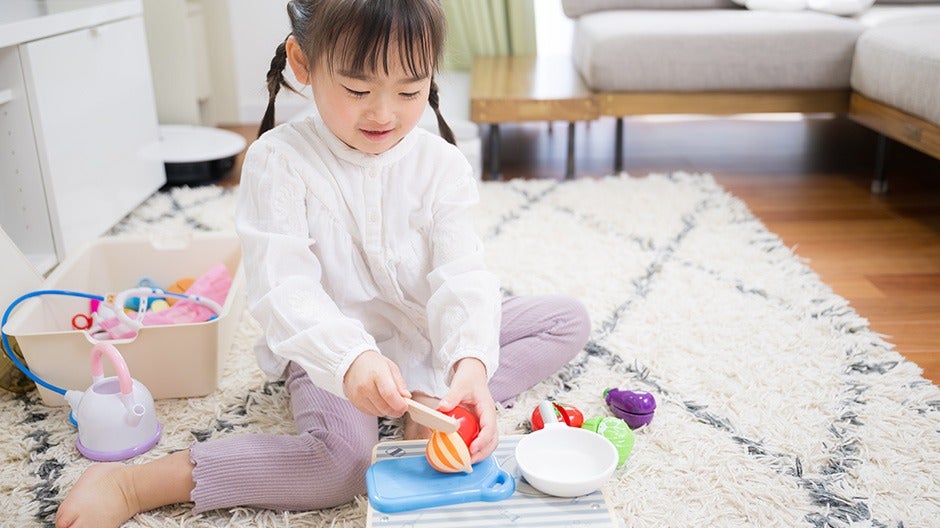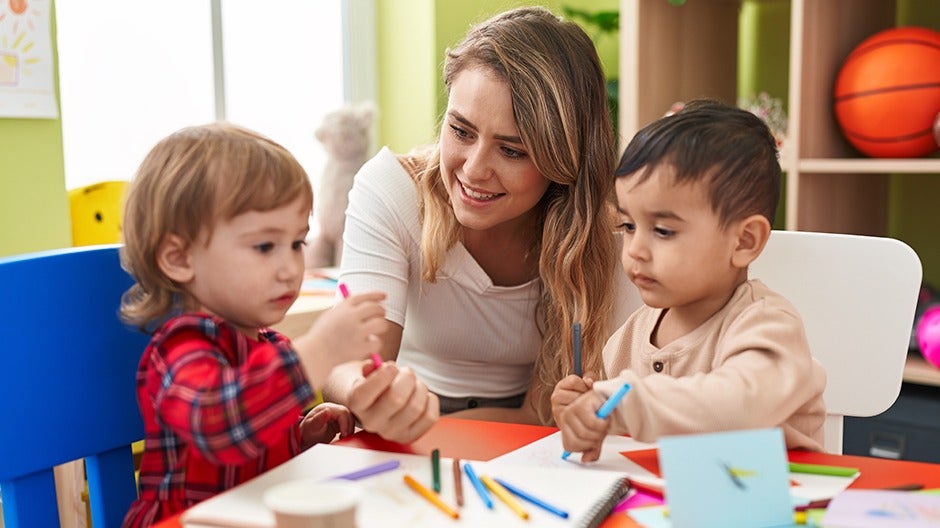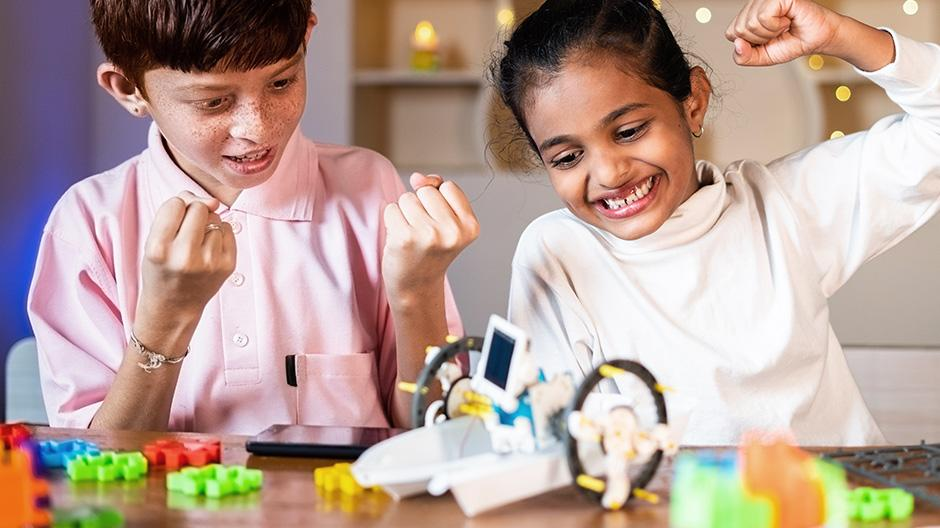At Begin, we believe in giving children a solid math foundation. Why is this important? Well, without developing essential early math skills, it’s challenging for a child to grasp more complex mathematical problems as they get older.
That may seem like a lot of pressure as a parent, but don’t worry, that’s what the Begin team is here for!
In this article, we’ll be focusing on cardinal numbers in particular. First, we’ll help you understand what they are and how they work. Then, our experts will share three fun and educational learning activities to help your young learner get comfortable with this concept.
Let’s dive in!
What Are Cardinal Numbers?
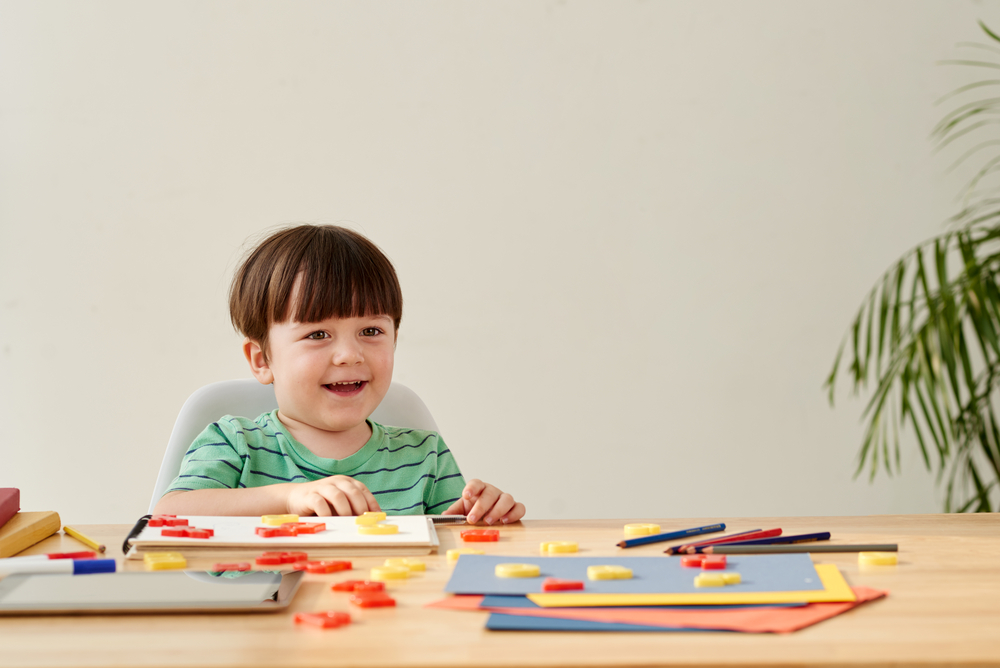
Cardinal numbers are the numbers we use for counting and so are also called counting numbers. For example, if someone asks, “How many cookies are in the jar?” we use cardinal numbers (i.e., one, two, three, etc.) to count and determine the amount.
Learning to count with cardinal numbers is one of the most important math skills a child must master. This ability is central to almost all other math work a child will be asked to do.
There are steps in learning these numbers both in terms of how high you count and how you count. Children might begin by mastering 1-5 and then 1-10 and then 1-20…and then 1-100!
There are other aspects of learning cardinal numbers, as well. Kids will learn to recognize (and write) the symbols that represent the numbers they count, and they will begin to understand that the last number you say represents all of the items in the group you are counting.
How Do You Write Them?
Cardinal numbers refer to a set of real-life objects. You can either write them in numerical form (e.g., 1, 2, 3, 4, etc.) or spell them out as words (e.g., one, two, three, four, etc.). It’s as easy as that!
The math activities below will focus on helping children get comfortable with counting as well as recognizing number symbols — two important factors when learning the principles of cardinal numbers.
It’s important to note here that it might take your child a while to write cardinal numbers correctly. For example, lots of kids write the number 5 backward, and young children often reverse the order of two-digit numbers (41 for fourteen) because they hear the 4 first.
That’s OK! Like with all learning objectives, each child is unique and will learn at a different pace.
Now, before we dive into the games we mentioned above, let’s take a peek at ordinal numbers and how they relate to the topic at hand.
Differences Between Ordinal And Cardinal Numbers
Cardinal numbers are sometimes confused for ordinal numbers, but there are a few fundamental differences between the two.
Ordinal numbers tell us the order of things in a set. For example, after a race, you can communicate that, “Jennifer was second,” or “Timothy was fifth.”
While counting does come into play to communicate ordinal numbers, it’s hard to just express the numbers by themselves (i.e., one, two, three, etc.). Instead, we have to look at a whole series or set to tell what or who is first, second, third, etc.
Cardinal numbers, on the other hand, are strictly used for counting because they tell us how many items there are. For example, “There are five apples in the fridge.”
As you can see, sometimes it can be challenging to distinguish between these two types of numbers. But learning through play is a great way to help kids understand these math principles and get comfortable using them in real-life situations.
With all of this in mind, here’s our list of three fun and effective games to teach your child cardinal numbers!
3 Fun Activities To Teach Cardinal Numbers
1) Frog Hop

What You’ll Need:
- Index cards
- Marker
- A large space (preferably outside)
- Sticky tack
What To Do:
First, write the numbers one through 10 on your index cards (one number per card). Then, place the index cards on the floor in any order, hopping-distance apart. You can use sticky tack to help secure the cards to the ground to prevent a potential slipping situation.
After placing your cards where you’d like them, you’re ready to play. The object of the game is for your child to hop from each of the cards to reach you. But they can’t just hop in a straight line. That would be boring!
Instead, your child will need to listen to your instructions and follow the directions as you tell them which card to jump onto and what to do while on that card.
For example, tell your child: Hop onto number five. Once your child is on that card, give them their second set of instructions: OK, since you’re on number five, you have to jump up and down five times! Ready, go!
Note: The instructions can be anything you want as long as they correspond to the number your child lands on. Wiggles, jumps, claps, and all kinds of silliness are encouraged!
Once they’ve completed your first set of instructions, encourage them to hop onto another number and give them different instructions. This repeats until your child has hopped to every number, and the game ends when they finally reach you.
Frog Hop is a fun activity with many great educational elements, including recognizing number symbols and practicing counting skills. In addition, hopping around and acting silly is a great way for kids to burn some energy!
2) Count Around The House
What You’ll Need:
- Any items you have around the house
What To Do:
This activity is all about using your home to help your child learn cardinal numbers.
To play, simply ask your child how many you have of a specific item around the house. Then, let them walk around and count how many there are!
Here are some ideas to get you brainstorming:
- How many chairs do we have in the living room? What about the whole house?
- How many rooms do we have in the house?
- How many shoes do you have in your closet?
- How many forks are in the drawer?
- How many plates do we have in the kitchen?
- How many mirrors do we have in the house?
You can also give your child a list of items they need to hunt for. For younger children who haven’t started reading yet, drawing pictures of the objects is a great option for this activity.
Once you give them the list, you can set a timer and say: Let’s see if you can count all the items on this list in four minutes!
This is an excellent cardinality game because it lets children work on their counting skills. We also love the fact that you don’t need many resources to play because you will be using whatever is available around your home.
3) Numbered Chocolate Chip Cookies

What You’ll Need:
- Cookie dough
- Chocolate chips
- Your favorite cookie recipe
- One die
What To Do:
To complete this delicious activity, you’ll need a cookie recipe of your liking.
Mix the ingredients to form your dough. Then, portion out the batter to form your cookies. Before adding your chocolate chips to each cookie, however, you’ll need to determine how many to use by rolling your die.
To do this, encourage your child to roll the die and count the number of dots that it lands on. Then, add that amount of chocolate chips to the cookie dough. If it lands on a small number (e.g., one or two) and they would like more chocolate chips, they can roll again!
Once the rolling and counting are done, place your cookies in the oven and get ready to enjoy some ooey-gooey baked goods when they’re ready!
Not only does this give your child plenty of counting practice, but it also teaches them how a die works and how to follow directions.
It also makes learning oh, so much fun! As soon as your child sees the cookie dough and chocolate chips come out, they’ll be happy to join in!
Let’s Make Cardinal Numbers Fun!
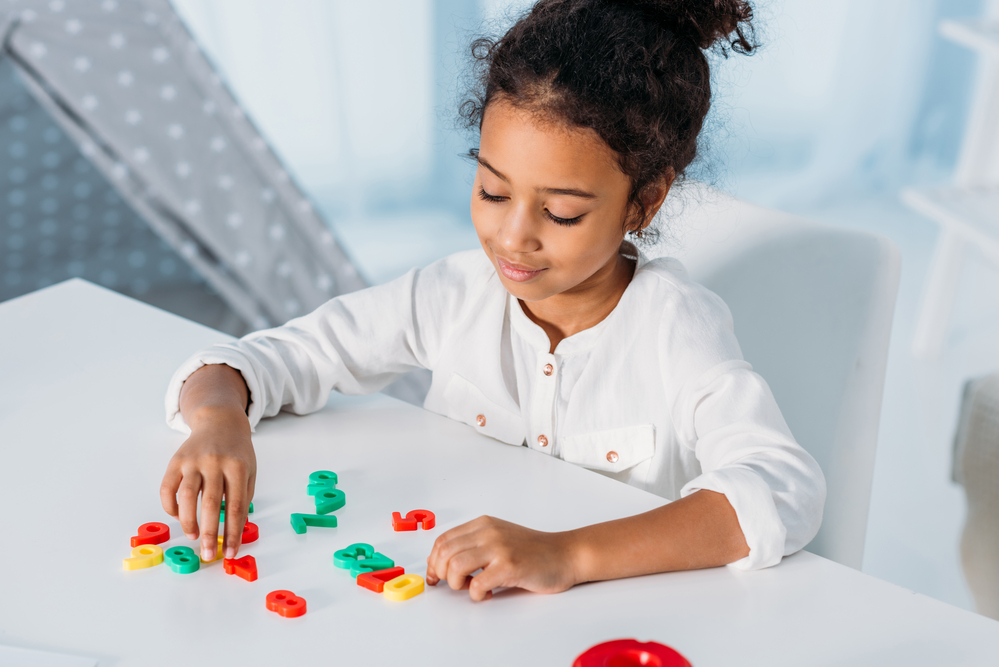
Cardinal numbers are not just a part of our daily lives; they are also the foundation for almost all the number work your child will encounter in school. Helping our young learners understand these numbers can set them up for success with future mathematical concepts.
One of the best ways to introduce any new math skill to your child is through engaging activities. This helps them have lots of fun while also learning and growing.
The above activities are meant to do exactly that — allow your child to grasp cardinality while also having fun. Whether you choose some or all of them, remember to be patient with your child as they hone their skills. This can help build a lifelong love for math and learning.
For more on early childhood math development, check out our Learn & Grow app today!



